Pilot Briefing: Everything under the sun
New designs seen at Sun ’n Fun—and around the world
Storm Week returns June 9-16
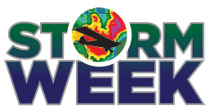 You know it: Airplanes and thunderstorms don’t mix. These convective beasts can produce airframe-shattering turbulence; damaging hail; sudden and dramatic wind shear; blinding downpours; and strong, gusty winds—sometimes as far as 20 miles from the edge of a cell. The good news is that it’s not difficult to avoid these violent storms—if you know how to use the tools at your disposal.
You know it: Airplanes and thunderstorms don’t mix. These convective beasts can produce airframe-shattering turbulence; damaging hail; sudden and dramatic wind shear; blinding downpours; and strong, gusty winds—sometimes as far as 20 miles from the edge of a cell. The good news is that it’s not difficult to avoid these violent storms—if you know how to use the tools at your disposal.
Because the convective season is upon us, participate in the Air Safety Institute Storm Week June 9 through June 16. Each day during Storm Week, learn how to improve your ability to read the weather, understand how ATC and weather briefers can aid you, and when to say “no” to a flight. Let ASI be your guide to its terrific resources such as courses, quizzes, and publications made available to you—free! Just look at ASI’s Thunderstorm Awareness Safety Spotlight to get an idea of what’s offered.
So how can you mitigate risks and use good judgment when it comes to a weather-related go/no-go decision? Apply what you learn from Storm Week, heed adverse weather warnings, and always have a plan B and stick to it.
American heroes
Doolittle Tokyo Raiders celebrate final public reunion
By Alyssa J. Miller
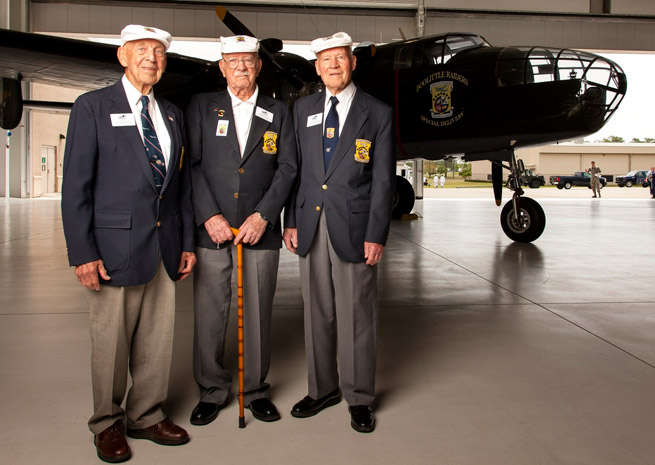
Richard Cole was back in his element April 17, flying Panchito, a North American B–25 Mitchell bomber, over Florida. Cole, James H. “Jimmy” Doolittle’s co-pilot on Crew No. 1 for the famed Doolittle Tokyo Raid on April 18, 1942, had learned short-field takeoffs in the bombers at Eglin Field in preparation for departure from the USS Hornet.
“He still loves to fly and is still very good at it,” Larry Kelley said of Cole’s performance during he and Cole’s 40-minute flight in Panchito. Cole and Kelley have flown together a handful of times over the years.
“Approach control assigned us an altitude of 1,500 [feet]. … Each time I looked over at the altimeter while he was flying, it was exactly 1,500 [feet] level or in a turn didn’t matter. This was a true indication that precise flying is still a natural for him.”
Cole and two of the three other living Doolittle Tokyo Raiders, David Thatcher and Edward Saylor, gathered in Fort Walton Beach, Florida, for the seventy-first and final public reunion April 17 through 21. Robert Hite was not able to attend the event. The public gathering came less than two months after Thomas Griffin died February 26.
Because of the significance of the raid, the men became heroes in the eyes of generations of Americans; but in their own eyes, they were simply fulfilling a duty to serve their country. The men’s selfless act is gaining attention on Capitol Hill as Doolittle Tokyo Raiders Sergeant at Arms Brian “Bear” Anderson is visiting each Congress member’s office to explain the significance of the raiders’ mission. Two bills have been introduced this year to honor the men with a single Congressional Gold Medal that would be on display at that National Museum of the United States Air Force.
Email [email protected].
Test Pilot answers
- The original Beech Staggerwing did not have flaps, but did have a “V rudder” that could be split open to create drag during approach and landing.
- With a five-gallon can of gasoline strapped to his back, Wesley May stepped from one wing of a Lincoln Standard and onto a wing of a Curtiss JN–4. He then poured the fuel into the Jenny’s tank.
- It had pneumatically operated telescopic wings that were retracted for high-speed flight and extended for low-speed flight.
- True. Ice covered with water is slipperier and offers less frictional resistance than dry ice. Ice melting under the blades of ice skates allows skaters to achieve greater speeds than if such frictional melting did not occur.
- Nope. It wasn’t the Hindenburg, which claimed only 35 lives at Lakehurst, New Jersey, on May 6, 1937. The offshore accident involving the Navy’s USS Akron on April 4, 1933, killed 73 primarily because there were no life vests aboard the dirigible.
- Feathering prevents further internal damage that might be caused by a windmilling propeller. It also prevents engine-driven fuel, oil, and hydraulic pumps from pumping fluids that could cause or sustain an engine fire.
- The Wright brothers, who achieved a then-remarkable propeller efficiency of 80 percent.
- The British Vickers Viscount 700 first flew on July 16, 1948; entered airline service with British European Airways in April 1953; carried 48 to 53 passengers; and cruised at 308 mph. It was powered by four Rolls-Royce Dart engines.
Chinese investor funds Sherpa certification
Utility airplane gets new wing
By Alton K. Marsh
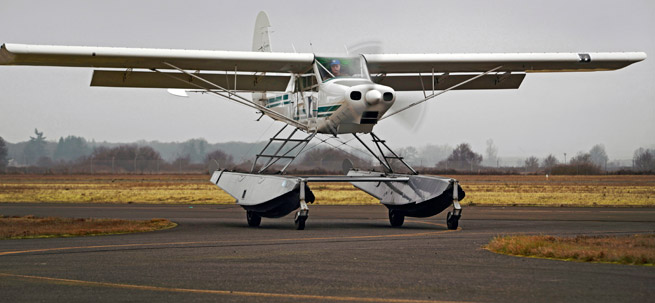
Perhaps you’ve seen it—a Piper Cub look-alike so big you have to use the landing gear as a ladder to reach the cockpit. After 25 years of research and development, hopes, and false starts, designer and partner Byron Root and Sherpa company owner Glen Gordon are finally realizing their dream. Funding from a Chinese investor will support 24 months of certification for the eight-place Sherpa K650T powered by an 890-shaft-horsepower Garrett 331-5 turboprop engine—and the six-place, 160-mile-per-hour Sherpa K500 powered by a 400-horsepower IO-720 Lycoming engine.
One of the $1.3 million 650T models will be delivered in six weeks to a customer, but it will be in the Experimental category. A second 650T airframe for the tube-and-fabric aircraft is complete, and will join another 650T model for certification trials. The secret to the new models, both the $475,000 model 500 and 650T, is an all-new wing. It is fatter than the original wing placed on the Sherpa demonstrator—now fitted with floats—20 years ago, and longer (44-plus feet) but faster and has 10 gas tanks. You could also make the case that it is slower, too.
“Sleek, good-looking wings that are so beautiful aren’t necessarily the fastest,” Gordon said. “How slow is slow and how fast is fast? When we’re landing at 35 miles an hour, one of our problems is going to be that pilots are not used to landing so slow. They’ll have a hard time believing the airplane is still flying. We’re going to have a placard in the plane that says, ‘If you are landing at more than 40 miles an hour, you are still flying.’”
In China, a joint venture called Ying-Kou Sherpa has been formed and will manufacture the aircraft for customers in China. Aircraft sold in the United States will be built at the existing small factory in a hangar at Scappoose, Oregon. Another group is interested in building the aircraft in Florida for military use.
Gordon, now 80, will continue to oversee operations in the United States. Root lost his eyesight a few years ago but not his vision for the big bushplane. Over the years numerous people have urged him to certify the airplane. “We’re taking care of that,” Gordon said.
Email [email protected].
PROGRESS REPORT: THE AOPA DEBONAIR SWEEPSTAKES
New panel, strong engine
A new panel gets its first outing
By Thomas A. Horne
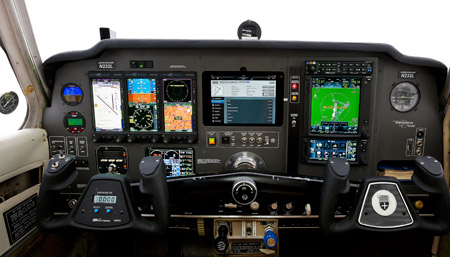 Avionics work complete, it was time to fly to the Sun ’n Fun International Fly-In and Expo at Florida’s Lakeland Linder Regional Airport. The nine-hour trip would give me a good introduction to the Debonair’s new panel—something I’d had plenty of time to think about as the massive avionics upgrade took place over the airplane’s long stay at Santa Fe Aero Services.
Avionics work complete, it was time to fly to the Sun ’n Fun International Fly-In and Expo at Florida’s Lakeland Linder Regional Airport. The nine-hour trip would give me a good introduction to the Debonair’s new panel—something I’d had plenty of time to think about as the massive avionics upgrade took place over the airplane’s long stay at Santa Fe Aero Services.
A couple of test hops with Pat Horgan, Santa Fe Aero vice president and general manager, gave me an intro to the new panel. That was helpful, but also showed me that the panel could do a lot, lot more than a couple of hours of dual would permit me to learn. Sure, I’d read the operating manuals for each new box, paying special attention to the Aspen Avionics Evolution 2500 displays and Garmin’s GTN 750 and GTN 650 GPS/nav/com units, but a nice, long flight would give me the button-pushing and screen-touching experience that would be the foundation for a more complete knowledge of the new “knobology.”
We departed Santa Fe as part of a loose three-ship formation. I flew the Debonair solo; Aspen Avionics President John Uczekaj and Aspen sales director Rob Blaha flew Uczekaj’s Diamond DA40; and Horgan, wife Emily, and kids flew Santa Fe Aero’s company airplane—a North American Navion.
The first of a series of pleasant surprises happened on takeoff from the Santa Fe Municipal Airport. Santa Fe Aero had done some badly needed engine work as part of the annual inspection they performed, and the result was a much stronger engine than the last time I flew it. The fuel control servo unit was replaced, the fuel screen replaced (it was 30-percent blocked by corrosion), the spark plugs replaced, the magnetos retimed, and an exhaust valve was lapped to boost a sagging compression reading. The engine sounded stronger, and had a more macho exhaust note than what I recalled from its earlier life.
In fact, the engine was now making about 20 percent more power than the last time I flew it in October 2012. I used the Electronics International MVP-50P engine/systems analyzer to set power for the takeoff from Santa Fe (elevation 6,348 feet msl). So it was full throttle, lean until the MVP read the highest horsepower—which turned out to be a respectable 72 percent—then enrichened to 100 degrees rich of peak exhaust gas temperature (EGT) for best power. Yes, the ship took its time to reach the 70-knot rotation speed while charging down Runway 20, but the airplane was off the ground and climbing at 400 fpm well before there was any concern about using up too much of the runway’s 8,342 feet.
Some three hours later our formation landed in northern Texas at Sheppard Air Force Base/Wichita Falls Municipal Airport. All I can say is: Huge runways, long taxi times, and no tower! (Shepherd AFB operations are shut down on most weekends.) It felt odd to self-announce on CTAF while seeing acres of parked warplanes below. Then it was an overnight stop at Alexandria, Louisiana, after a two-hour, 30-minute flight. The next day, we went on to Lakeland, a four-hour-and-change leg that showed off the value of the Debonair’s 20-gallon-per-side tip tanks (I filled them halfway).
We’ll talk in depth about the avionics in the next issue, but in the meantime are you interested in the Debonair’s cruise performance? Here’s one set of numbers, written down at 7,500 feet msl east of the Bonham, Texas, VOR (BYP):
OAT | +18 deg C./64 deg F.
Engine settings | 21.9 in MP/2,430 rpm
Power output | 72 percent
Fuel burn | 14.3 gph
Mixture setting | 52 deg F. rich of peak
Peak EGT | 1,474 deg F., Number 6 cylinder
True airspeed | 148 KTAS
Indicated airspeed | 128 KIAS
Groundspeed | 150 knots
This would prove to be a pretty typical setup for the Lakeland trip. Sometimes I’d run at 100 or 150 degrees rich of peak EGT, just to give the engine a workout, get a better true airspeed, and continue to help clean out any remaining internal engine deposits. The engine had been essentially idle when AOPA bought it last summer, so “run her hard” is the slogan for now. There will be plenty of time to explore lean-of-peak EGT operations on future flights.
Email [email protected].
AOPA sweepstakes coverage sponsored by Bank of America.
Test Pilot
By Barry Schiff
- From reader John Schmidt: Upon touchdown, the rudder of an orbiter (space shuttle) would split open and become a speed brake. What well-known general aviation airplane incorporated such a feature long before America’s manned space program had begun?
- The first air-to-air refueling of an airplane occurred on November 12, 1921. How was this accomplished?
- What was so unusual about the 1931 French-built Makhonine MAK–10 monoplane?
- True or False? Landing on a runway coated with wet ice requires more distance than landing on a runway coated with ice that is dry.
- From reader Tony Bill: What was the name of the famous 1930s airship that was involved in a New Jersey accident that claimed more lives than any other accident in a dirigible?
- The primary purpose of feathering a propeller following an engine failure is to reduce drag and improve engine-out performance. What are two other important reasons for feathering?
- From reader George Shanks: An aircraft propeller originally had been regarded as a rotating pedal. Who was first to recognize that it was a rotating wing and introduce twist to the blades?
- What was the world’s first civilian, turboprop-powered production airplane?
PILOT PRODUCTS
Android arrives
Tablets are finally ready for aviation
By Ian J. Twombly
Last fall it was estimated that 70,000 Android tablets and roughly 1.2 million Android phones are activated every day. There are 700,000 Android applications that have been downloaded more than 15 billion times. Those are staggering numbers that highlight Android’s estimated 75 percent of the worldwide smartphone market. But Android has been playing catch up in the tablet market. There are now dozens of Android tablets, if not hundreds, on the market.
Other than stiff competition from the iPad, the biggest impediment to Android’s adoption in the cockpit has probably been a lack of aviation-specific applications. Android is open source and works on multiple devices from multiple manufacturers. It also has numerous versions. That leads to complications for developers. Between a smaller market and increased difficulty to get the application to work, it makes sense that developers have stayed away. Now more applications are coming to the Android market.
Pilots looking at purchasing a tablet today have two options—Apple’s iPad or not. The “not” category can be anything from a basic $200 off-brand tablet to one costing hundreds of dollars. Although the number of choices seems overwhelming, it presents an advantage for pilots. Because you can shop for size, weight, price, and form factor, it will be easy to find one that fits your budget and cockpit.
Foreflight may be the leader in all-in-one flight bag applications for Apple, but it’s nowhere to be found on Android. And that’s unlikely to change. CEO Tyson Weihs has said that developing for Android simply doesn’t make sense for the company. His sentiments are echoed by many other top Apple aviation developers, but not all. In the Google Play store you will find AOPA’s FlyQ Pocket, Garmin Pilot, and WingX.
Some of the top-rated applications were, not surprisingly, purpose built for Android. Here are a few of our favorites, although they do not represent all the great applications currently available.
Email [email protected].
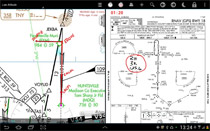 Avilution
Avilution
Avilution’s one-stop navigation tool is all you could hope for from a tablet-based aviation application. Features such as a full chart suite, flight planning with airways, weather briefings, weather overlay, user waypoints, third-party weather device support, and airport information that we’ve come to expect are all here. There are a few unique or unusual features, such as split screen, and a flight segment-specific notepad that has prefilled slots for takeoff information, holding, and more. Users can also draw on the maps to create traffic patterns, holds, or anything else they need to visualize.
Price: $54.95 a year with auto-renewal or $74.95 a year for one-time sign-up
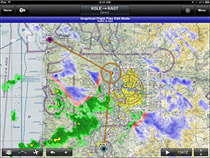 Garmin Pilot
Garmin Pilot
When you hear Garmin you automatically think great user interface, lots of data, and stable platform. Garmin Pilot delivers on all fronts. It has detailed airport information, all the normal charts and approach plates, weather downloads and overlays, and ADS-B in-flight weather support. You also can receive georeferenced approach plates and SafeTaxi, Garmin’s georeferenced airport diagrams.
Price: 30-day free trial, then $49.99 a year, not including $49.99 a year for georeferenced approach plates and $29.99 a year for SafeTaxi.
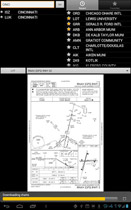 Approach Charts
Approach Charts
This basic application from BBFlight, LLC. is a simple presentation of only the FAA’s instrument approach procedure charts. Approach Charts is simple, easy to use, and a great resource for these important documents. It opens to a simple screen with a field for airport identification, city, or state. Enter one of those and the charts automatically download and are listed as ready for use offline, categorized by airport identifier. Click on the star and that airport is saved as a favorite.
One of the unique features of Approach Charts is the ability to search for plates with a route. Type in your departure airport identification, “TO,” and then the arrival airport, and the application will download all the charts for every airport along the route.
Price: $9.99 one-time purchase that includes lifetime updates
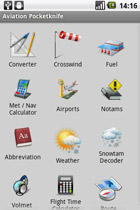 Aviation Pocketknife
Aviation Pocketknife
Aviation Pocketknife includes 14 categories of conversions, calculators, and general information. Included is everything from airport information and approach plates to time, fuel, distance calculators, a crosswind calculator, and an international aircraft registration guide. This application may not give you everything you need, but the price is right.
Price: Free
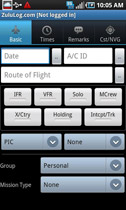 Zululog
Zululog
The Zululog application is one of the most popular on Android, and it’s also one of the best. It can be used either as a standalone application or in sync with the desktop version. The logbook can track any flight regime you can throw at it, as well as keep up with your currencies and flight time totals. It also includes a flight timer and a “flashlight.”
Price: Free
Sammy Mason and his Stearman
What a way to learn to fly
By Dave Hirschman
Photography by Mike Fizer
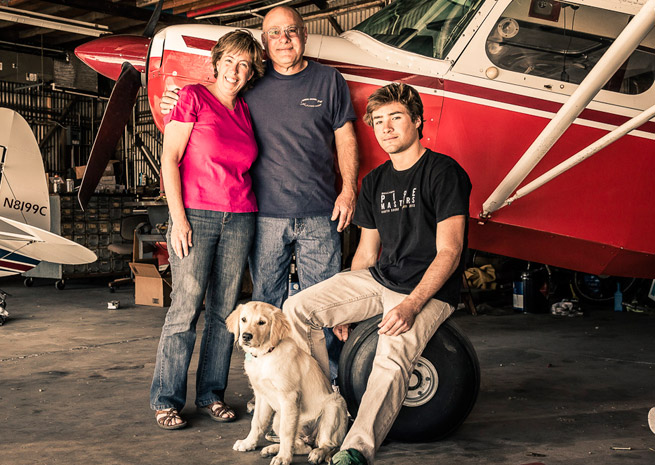
When you ask Sammy Mason how much flying time he has, the 19-year-old isn’t quite sure how to answer.
“The short answer is 1,100 hours,” he says. “But I flew hundreds of hours in a Cub with my mom before I was a pilot, and I couldn’t log any of that because she’s not a CFI. Mom would take me flying in the Cub even before I was born, and when her belly got too big to hold the stick all the way back, she did wheel landings.”
Mason’s parents, Pete and Rowena, are accomplished pilots and aircraft restorers at Santa Paula Airport in Southern California, a center for vintage, experimental, and aerobatic flying.
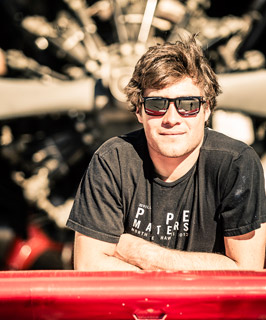 Sammy, the grandson of pioneering Lockheed test pilot Sam Mason, was literally raised at the airport. He was homeschooled from seventh grade on, but “airportschooled” may be more accurate as he apprenticed at his parents’ restoration business, shared aviation ideas and ambitions with like-minded kids (see “Youth Movement,” March 2009 AOPA Pilot), and soloed a glider and a powered aircraft at the earliest legal ages (14 and 16).
Sammy, the grandson of pioneering Lockheed test pilot Sam Mason, was literally raised at the airport. He was homeschooled from seventh grade on, but “airportschooled” may be more accurate as he apprenticed at his parents’ restoration business, shared aviation ideas and ambitions with like-minded kids (see “Youth Movement,” March 2009 AOPA Pilot), and soloed a glider and a powered aircraft at the earliest legal ages (14 and 16).
He’s currently competing at the Advanced level in IAC aerobatic contests in a Pitts S–1S he helped his father rebuild, performing in airshows (he has a low-level aerobatic waiver in Pitts and Stearman biplanes), towing gliders, and working on an instrument rating. Mason’s professional goals include a range of flying including teaching, airshows, movies, and perhaps corporate jets.
“I can’t picture myself in any career other than flying,” Mason said. “I’d like to teach aerobatic and tailwheel flying because that’s what I know best. I want to finish my ratings, and I can’t imagine anything better than travelling, going places in a jet, and making a living doing it.”
On a recent photography flight in the 275-horsepower Stearman the family built as a tribute to Mason’s grandfather (the red airplane has a distinctive dead rat on the fuselage and wheel covers, just like the 1930s biplane Sam Mason used to fly that was owned by a fumigation firm), the young Mason flew with fluidity and precision over some of the surf spots he frequents when not flying.
Mason’s mother said her son decided at age 12 that he wanted to fly. “We’ve done a lot to make flying opportunities available to him without pushing him into it,” she said. “There was a period when he was 10 or 11 that he didn’t want to come to the airport at all, and that was OK with us. But when he decided he wanted to fly, there was no holding him back.”
Mason said flying came easily for him, but it wasn’t totally intuitive.
While learning in the family’s Cub, his dad kept reciting the old “step-on-the-ball” mantra, but Sammy—then 12—thought his dad was referring to a real ball, and not the tiny one suspended in the inclinometer.
“I kept looking all over the floor of the airplane for a ball,” he said. “I didn’t know he was talking about something on the instrument panel. But at some point, I got it, and things just clicked.”
After our photo flight, Mason made a series of takeoffs and landings at Santa Paula’s Runway 22. On some, he’d touch down on the left main wheel and track the centerline, and then lift off again and alternate with the right wheel.
Showing off?
“No, just practicing a coordination exercise my dad taught me,” he said. “I hadn’t flown the Stearman for a few months, so it’s a way to develop a feel for the airplane.”
Email [email protected].
Burt Rutan developing new seaplane
No medical required
By Alton K. Marsh
 Two years after retirement Burt Rutan is at it again, developing a new seaplane called the Skigull at his cabin near Coeur d’Alene, Idaho. It rises from the water on skis. At first he thought he had an original design, a tandem-seat twin-engine amphibian that can land on snow, grass, and—if you must—a paved airport. Then he found the 1950s Sea Dart jet on the Internet taking off on water skis.
Two years after retirement Burt Rutan is at it again, developing a new seaplane called the Skigull at his cabin near Coeur d’Alene, Idaho. It rises from the water on skis. At first he thought he had an original design, a tandem-seat twin-engine amphibian that can land on snow, grass, and—if you must—a paved airport. Then he found the 1950s Sea Dart jet on the Internet taking off on water skis.
It’s also a piston-engine motor glider. It has to be if Rutan, who lost his medical in 1998, is going to fly it. An FAA friend told him that he needed longer wings if he wanted it to qualify as a motor glider. So Rutan created a 43-foot wingspan that can be folded for docking while still on the water, or for storage in a garage. The design may be sold as a kit, if it works,” Rutan told a meeting of The Old Bold Pilots in California.
If it works, Rutan will have himself a two-seat amphib capable of making it from the cabin to Oshkosh with one stop. He won’t need a medical. He has not chosen the engines because he does not yet know the power that will be needed. The two engines will blow across a high-lift section of the wing. With all that wingspan comes the tendency to float, so he will have big flaps to give him short takeoff and landing capability for small lakes—the kind he likes to explore.
When you must positively, absolutely land at a boring paved airport, roller-blade wheels will extend three-tenths of an inch below the skis. The skis are coated with the same kind of plastic used on recreational skis and Iditarod race sleds in Alaska.
The taildragger is a trimaran, with 40 percent of its weight supported in the water by the sponsons and 60 percent supported by the hull. His waist will be below the waterline. There are still questions to be answered, so a wooden model of the Skigull has been completed and will be attached to a modified boat that will push it through the water to measure the power required. This will be Rutan’s thirty-seventh aircraft design (see “An Unlikely Astronaut,” page 64).—AKM
Email [email protected].
A video of Rutan can be seen on YouTube.
Metal artist created Hollywood fantasy
Bill Yoak of Lewisburg, West Virginia, was an artist who made metal works of fantasy, mystery, and beauty—and all of them flew. He provided fantasy aircraft to Hollywood, mysterious aircraft for the Lockheed Skunk Works, and beautiful ones for himself and warbird owners. Yoak died in mid-March at age 67 of colon cancer.
He created helicopters for the movie Blue Thunder while working at the R.W. Martin company, and for Rambo III. While at the Skunk Works he worked on the Cheyenne helicopter, the U–2 spy plane, and the nose and cockpit of the SR–71. The nose was redesigned depending on the mission. He was a Corsair stunt pilot in the television series Baa Baa Black Sheep.
Yoak left Hollywood to raise his son, Scott, in a “more wholesome environment,” as he told Warbirds magazine. Until his death he had worked with Scott at Aerospace Specialties. Scott took over the business two years ago after learning all his father’s tricks for bending metal to his will. The senior Yoak’s pride and joy was the North American P–51 Mustang called Quick Silver that is often displayed at airshows.
“Dad loved what he was doing,” said Scott Yoak. “He loved the industry and the people in it.”
A Fleet with a history
24 years in the making
By Jim Moore
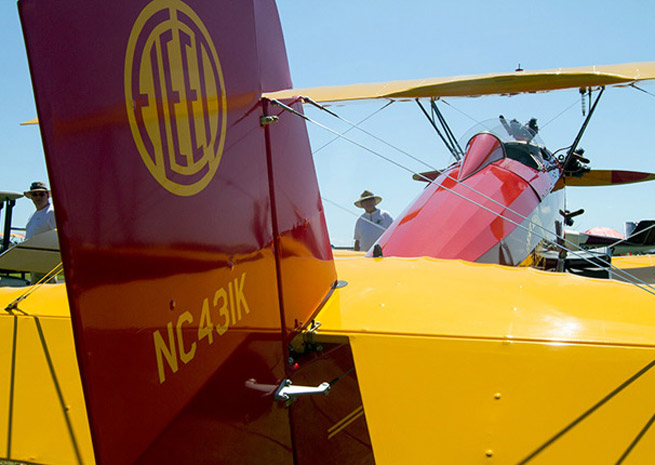
Restored with care after a crash landing, the Fleet Model 2 that carried Maryland pilot Stan Sweikar to Lakeland, Florida, for the Sun ’n Fun International Fly-in and Expo completed a journey 24 years in the making. The bright yellow wings that gleamed in the Florida sun had been replaced after the original set was destroyed in 1988, when Sweikar lost engine power over Virginia on his way home from Oshkosh.
“I had to put it into a tree line on the edge of a swamp,” Sweikar recalled, pausing from the task of meticulously wiping down the bright red undercarriage. After he got it back in the air on July 1, 2012, he flew it to EAA AirVenture and earned the Silver Age Champion—Bronze Lindy trophy. Other accolades have followed, though Sweikar said the Fleet’s run as a show airplane may be limited: bugs, dirt, and oil take their toll on pristine finishes, and the opportunity to compete and win might be over in a year. “You’ve got to do it when it’s fresh.”
Sweikar’s Fleet rolled out of the Consolidated Aircraft Co. factory in Buffalo, New York, in August 1929, and went to work as a trainer in Cleveland. Several owners later, bestselling author Richard Bach barnstormed across the country with it, and gave the airplane a starring role in his 1977 book Illusions. Sweikar has meticulously restored the red and yellow paint scheme, the Fleet logo on the tail, and the “Great American Flying Circus” logo that adorned the fuselage during Bach’s ownership—a fuselage that escaped nearly undamaged in the 1988 crash landing.
“I didn’t get a scratch,” Sweikar said, though “the wings were wiped out.”
The Kinner B-54 radial engine is not the original K-5, but painstakingly overhauled and restored with the same kind of care as the rest of the airplane. Its lacquer-black cylinders, heads protruding from a round nose, shine like mirrors. The Fleet is one of four planes Sweikar, 73, has restored. The retired U.S. Navy flight test engineer said he is now working on a Culver Cadet at his home in Dameron, Maryland, which features a grass strip in the backyard. “This is my avocation,” he said with a smile.
Sweikar said the Fleet is a joy to fly, like a “Cub with two [sets of] wings,” cruising at 85 mph or 90 mph, cockpit open to the wind, sipping seven gallons of fuel per hour. “You get to see the countryside go by.”
Email [email protected].
An official Coast Guard town
Hollywood loves Astoria, Oregon
By Alton K. Marsh
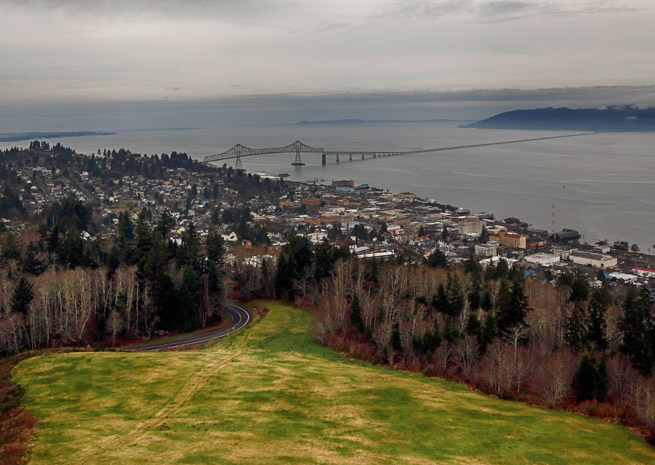
Ever see the movie, The Goonies, written by a then-lesser-known writer named Steven Spielberg? I’ll spoil it for you right away, especially since it came out in the 1980s. The house that the mean banker was going to foreclose on, but was saved because the kids found the treasure, is still standing in Astoria, Oregon. The private owners will let you look from the outside and would appreciate it if you would drop a dollar in the box to keep the house looking movie perfect.
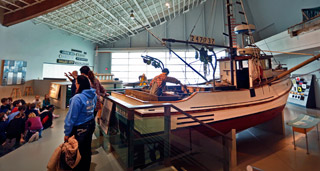
The kids found the treasure on a ship manned by skeleton pirates and that was hidden in a cave on the Oregon coast. This area of Oregon’s coast was made famous by dozens of television commercials—especially car commercials. Take a 40-minute drive south to Cannon Beach, home of the famous 235-foot-tall Haystack Rock in the surf.
The best way to take in miles of the Oregon beach at once is to ride in Gary Turel’s Seaside Helicopters Bell Jet Ranger (503-440-4123). Flights start at $41. You’ll see his stand on Highway 101 as you drive south only a quarter-mile south of Seaside, Oregon. Turel has a single-engine helicopter, so he won’t go out over the ocean. No problem. The scenery is the rock formations along the beach.
Topping the list of world-class restaurants in Astoria is T. Paul’s Supper Club in downtown Astoria, where the guy next to you may just be a helicopter pilot. Next up was the Silver Salmon, which is more formal than the Supper Club—but the food is worth the higher price. Bridgewater Bistro offers a contemporary restaurant design in a restored part of the dock area and built right over the water. Sit at the fireplace and look through the transparent floor at the waves lapping at the dock pilings below. There is a pirate skeleton hanging just above the waves—not always a permanent fixture, so don’t set your hopes on seeing it.
The attraction that draws 100,000 people here each year is the Columbia River Maritime Museum. It is the third largest such museum on the west coast. Built 50 years ago, it had a $6 million renovation in 2002 and is more than worth the $12 admission price (less for kids and seniors). The gift shop alone is worth the visit.
Do you know what the Columbia Bar is? You’ll learn about the roiling waters that have claimed 400 deep-draft vessels over 220 years. (If you count the smaller boats, 2,000 total have sunk, taking 700 lives.) Working with the Coast Guard, the museum features videos of ships bouncing through the 20- and sometimes 40-foot waves of the bar, where the Columbia River pounds into the Pacific Ocean. The museum is featuring a new 3D theatre experience called Sharks! a film created by Jean-Michel Cousteau.
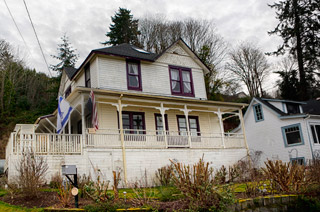
Astoria loves the Coast Guard and vice versa, with the city sign claiming that Astoria is a Coast Guard city. Coast Guard Air Station Astoria is located at Astoria Regional Airport. You may see big Sikorsky MH–60 helicopters on their way to a rescue, or a bright yellow AgustaWestland 109 with the word “pilot” on the side (ship pilot, not airplane pilot), delivering a qualified captain who will guide a giant cargo ship through the dangerous bar.
Kids will get a kick out of buying a balsa airplane for $1 at the Astoria Column gift shed, located at the highest point in the city, and throwing it off the top. It’s actually encouraged, and the parents will take in a panoramic of fog, mountains, and water in all directions from its apex, 722 feet above sea level. If you get the urge to run up the circular stairway, don’t—it’s 164 steps to the top.
Cross the Astoria Megler Bridge, which rises 200 feet in the air, for a visit to the Lewis and Clark National Historical Park, where campgrounds are available. The Coast Guard often trains above the beach near the campgrounds. Drive out to the north jetty and watch the Columbia River beat up on the Pacific Ocean. It’s quite a fight.
Email [email protected].
Fly-outs made possible by Enterprise Rent-A-Car.
Cargo ships must stay in a channel 43 feet deep—50 feet at the dangerous Columbia River bar. Rising and falling of the rough water at the bar can put huge ships perilously close to the bottom. A bump on the bottom can cost $1 million in damage to a cargo ship. The routine rising and falling can be as much as 15 feet—more on a rough day when the bar must be closed, causing ships to wait in the ocean for calmer weather.
Want to know more?
For more information visit the website
Rental car: www.aopa.org/cars; 866-315-9155
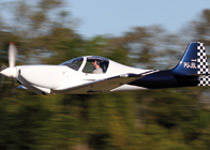 Brazil’s brand-new Wega arrived in the United States in April. The Wega is an all-composite, Experimental-category airplane built in the Santa Catarina district in Brazil. Inspired by the Falco series of piston singles created by the design legend Stelio Frati, the Wega uses a single-piece wood spar reinforced by a carbon-fiber outer layer. Wega turns in a maximum cruise speed of 190 knots on a fuel burn of just 8 gph. It will come as a kit selling for $200,000. Construction time is estimated at 2,000 hours.
Brazil’s brand-new Wega arrived in the United States in April. The Wega is an all-composite, Experimental-category airplane built in the Santa Catarina district in Brazil. Inspired by the Falco series of piston singles created by the design legend Stelio Frati, the Wega uses a single-piece wood spar reinforced by a carbon-fiber outer layer. Wega turns in a maximum cruise speed of 190 knots on a fuel burn of just 8 gph. It will come as a kit selling for $200,000. Construction time is estimated at 2,000 hours.
SPEC SHEET
Wega
Engine | XP 360, 180 hp
Cruise speed | 190 kts
Range | 1,200 nm
Fuel capacity | 57 gal
Price | $250,000
www.aerowega.com
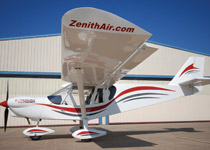 Taking less time to build is a Light Sport kit from Zenith Aircraft Co. called the CH 750 Cruzer from Chris Heintz. Although it’s influenced by its well-known short-takeoff-and-landing predecessors, the CH 750 Cruzer is a new design. The 750 Cruzer’s fuselage and wide cabin are nearly identical to those of the STOL CH 750. The cruise speed for the 400-hour kitplane is 118 mph.
Taking less time to build is a Light Sport kit from Zenith Aircraft Co. called the CH 750 Cruzer from Chris Heintz. Although it’s influenced by its well-known short-takeoff-and-landing predecessors, the CH 750 Cruzer is a new design. The 750 Cruzer’s fuselage and wide cabin are nearly identical to those of the STOL CH 750. The cruise speed for the 400-hour kitplane is 118 mph.
SPEC SHEET
CH 750 Cruzer
Engine options | Continental O-200, Lycoming 233, Rotax 912 series, Jabiru 3300, 95-160 hp
Cruise speed | 118 mph
Range | 400-525 nm
Fuel capacity | 20 gal
Price | $16,490, kit
www.zenithair.com
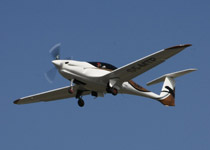 The Pipistrel Panthera made its first flight of nearly an hour in Slovenia. The Panthera is a four-seat aircraft that can take four people 1,025 nautical miles at 200 knots burning 10 gallons of fuel per hour. With full composite construction and a titanium retractable undercarriage, enhanced comfort, and parachute rescue system standard, The Panthera can be equipped with a conventional, hybrid, or all-electric propulsion system. The certified price is $513,500, or you can buy it as a factory-assist kit for $50,000 less.
The Pipistrel Panthera made its first flight of nearly an hour in Slovenia. The Panthera is a four-seat aircraft that can take four people 1,025 nautical miles at 200 knots burning 10 gallons of fuel per hour. With full composite construction and a titanium retractable undercarriage, enhanced comfort, and parachute rescue system standard, The Panthera can be equipped with a conventional, hybrid, or all-electric propulsion system. The certified price is $513,500, or you can buy it as a factory-assist kit for $50,000 less.
SPEC SHEET
Pipistrel Panthera
Engine | Lycoming IO-390, 210 hp
Cruise speed | 202 kts
Range | 1,025 nm
Price | $513,500
www.pipistrel-usa.com


